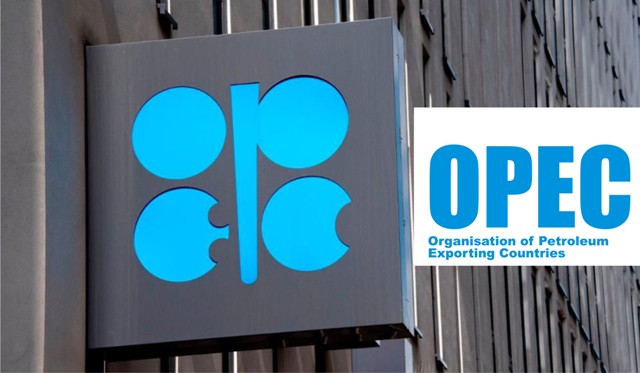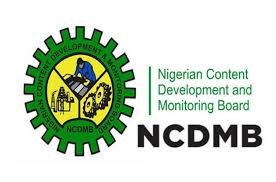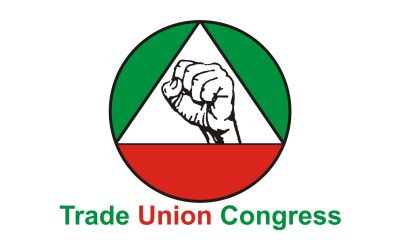Oil & Energy
NOPEC: America’s Last Stand Against OPEC’s Drift To The East

The passing, on Thursday, by a U.S. Senate Committee of the ‘No Oil Producing or Exporting Cartels’ (NOPEC) bill is the surest sign yet that Washington has finally run out of patience with Saudi Arabia, and with the Saudi-led Organization of the Petroleum Exporting Countries (OPEC), in their indifference to dealing with high oil prices, their continued dealings with ‘OPEC+’ key member Russia, and their ongoing drift towards the China-Russia axis of power.
Washington has decided that the time might be right to up the ante on its former allies and let loose the DamocleanSword of the NOPEC Bill if necessary, it seems.
The ante is huge for Saudi Arabia, OPEC, and OPEC+’s key member, Russia, as the NOPEC Bill, as analysed in depth in all of my books on the oil sector since 2014, including at length in the most recent one, has a broad mandate allowing it to declare it illegal to artificially cap oil production or to set prices.
OPEC was specifically mandated upon its foundation in 1960 to ‘co-ordinate and unify the petroleum policies’ of all of its member states, effectively fixing oil prices.
Given that OPEC’s members account for around 40 percent of the world’s crude oil output, about 60 percent of the total petroleum traded internationally from their oil exports and just over 80 percent of the world’s proven oil reserves, its influence on the global oil market has been cartel-like.
The NOPEC bill, if and when enacted, would immediately dramatically inhibit any and all actions or statements from OPEC specifically, and its key members, and its de facto leader Saudi Arabia.
This would include coordinated oil production cuts or increases and statements relating to where the organisation or any of its key members, including Saudi Arabia, forecast production levels or oil prices to be in the future.
It would also immediately remove the sovereign immunity that existed in U.S. courts for OPEC as a group, and for its individual member states.
This would leave Saudi Arabia open to being sued under existing U.S. anti-trust legislation, with its total liability being estimated at US$1 trillion of investments in the U.S. alone, as also analysed in depth in my new book on the global oil markets.
For Saudi Arabia, it would also mean that the effective value of its flagship oil and gas giant, Saudi Aramco, could be zero, given that it is the key corporate instrument used to manage the oil flows of the de facto leader of the world’s leading de facto oil cartel.
Although Saudi Aramco is not directly involved in making the policy, the anti-trust legislation of the U.S. and U.K. can point to Aramco as being collusive in price-fixing through adjusting its output to help manage oil prices and by its key corporate officers making statements about future production levels of the company and its price expectations.
This view is further bolstered by the fact that such a small percentage of its shares were floated in the initial public offering in December 2019, and that it was made clear at the time of the offering that the company would remain operationally directed by the government of Saudi Arabia.
Indeed, Saudi Aramco’s Chief Executive Officer, Amin Nasser, said at the time of the IPO that Saudi Aramco’s oil and gas production decisions were sovereign matters that would remain with the government.
It would also mean that trading in Aramco’s products, including oil, would be subject to the anti-trust legislation, meaning the prohibition of sales in U.S. dollars.
It would further mean the eventual break-up of Aramco into much smaller constituent companies that are not capable of influencing the oil price, if the Saudis could offer up no other way of complying with the anti-trust laws.
That the situation should come to the final use of the NOPEC Bill threat is a function of three factors: the first was the breaking of the core 1945 agreement struck between then-U.S. President, Franklin D. Roosevelt and the Saudi King at the time, Abdulaziz on board the U.S. Navy cruiser Quincy in the Suez Canal.
The deal that they agreed, which ran relatively smoothly for years, was that the U.S. would receive all of the oil supplies it needed for as long as Saudi had oil in place, in return for which the U.S. would guarantee the security of both of the ruling House of Saud and, by extension, Saudi Arabia.
Although there was a bump in the road with the 1973/4 Oil Embargo, the real challenge to this agreement came in the 2014-2016 Oil Price War initiated by Saudi Arabia with the principal aim of destroying or at least severely disabling the then-nascent U.S. shale oil sector.
From the earliest days, especially of former President Donald Trump’s administration, the threat of passing of the NOPEC Bill was used to ‘persuade’ the Saudis into adhering to the ‘Trump Oil Range’, a floor of US$35-40 per barrel of Brent (the price above which most U.S. shale oil producers could make a profit) and cap of US$75-80 pb (above which there were likely to be negative economic effects to the U.S.).
The second reason is the apparent indifference of the Saudis and OPEC to help to lower oil prices right now, to the extent that Saudi Crown Prince, Mohammed bin Salman (and the Crown Prince of Abu Dhabi, Mohammed bin Zayed Al Nahyan) even refused to take an urgent telephone call on the subject from President Joe Biden.
For the U.S. economy, historical precedent highlights that every US$10 per barrel change in the price of crude oil results in a 25-30 cent change in the price of a gallon of gasoline.
The corollary longstanding rule of thumb is that for every one cent that the U.S.’s average price of gasoline increases, more than US$1 billion per year in discretionary additional consumer spending is lost.
Politically, it is a matter of historical fact, as shown in my new book on the global oil markets, that since World War I, the sitting U.S. President has won re-election 11 times out of 11 if the U.S. economy was not in recession within two years of an upcoming election.
However, presidents who went into a re-election campaign with the economy in recession won only once out of seven times. President Biden, or whoever the Democratic candidate may be, will face another presidential election in 2024, but even before that, he faces critical mid-term elections in November 2022, when his Democrats could lose their narrow majority in the House of Representatives.
The third reason for the U.S.’s rising fury over the disregard of Saudi Arabia and OPEC for previous agreements and assurances made with the U.S. is that all the while they have been moving closer to the China-Russia axis of power and Washington now fully sees this as having reached a political inflection point that morphs into a true ‘zero sum game’.
Saudi Arabia has pushed for a broadening and deepening in the cooperation of the Arab states both in general terms and specifically via the Gulf Cooperation Council (GCC), and has appeared to be drifting further toward China’s sphere of influence since at least 2016.
This was highlighted recently by the recent series of meetings in Beijing between senior officials from the Chinese government and foreign ministers from Saudi Arabia, Kuwait, Oman, Bahrain, and the Secretary-General of the Gulf Cooperation Council (GCC).
At these meetings, the principal topics of conversation were to finally seal a China-GCC Free Trade Agreement and “deeper strategic cooperation in a region where U.S. dominance is showing signs of retreat,” according to local news reports.
By: Simon Watkins
Watkins reports for Oilprice.com
Oil & Energy
FG Woos IOCs On Energy Growth
The Federal Government has expressed optimism in attracting more investments by International Oil Companies (IOCs) into Nigeria to foster growth and sustainability in the energy sector.
This is as some IOCs, particularly Shell and TotalEnergies, had announced plans to divest some of their assets from the country.
Recall that Shell in January, 2024 had said it would sell the Shell Petroleum Development Company of Nigeria Limited (SPDC) to Renaissance.
According to the Minister of State for Petroleum Resources (Oil), Heineken Lokpobiri, increasing investments by IOCs as well as boosting crude production to enhancing Nigeria’s position as a leading player in the global energy market, are the key objectives of the Government.
Lokpobiri emphasized the Ministry’s willingness to collaborate with State Governments, particularly Bayelsa State, in advancing energy sector transformation efforts.
The Minister, who stressed the importance of cooperation in achieving shared goals said, “we are open to partnerships with Bayelsa State Government for mutual progress”.
In response to Governor Douye Diri’s appeal for Ministry intervention in restoring the Atala Oil Field belonging to Bayelsa State, the Minister assured prompt attention to the matter.
He said, “We will look into the issue promptly and ensure fairness and equity in addressing state concerns”.
Lokpobiri explained that the Bayelsa State Governor, Douyi Diri’s visit reaffirmed the commitment of both the Federal and State Government’s readiness to work together towards a sustainable, inclusive, and prosperous energy future for Nigeria.
While speaking, Governor Diri commended the Minister for his remarkable performance in revitalisng the nation’s energy sector.
Oil & Energy
Your Investment Is Safe, FG Tells Investors In Gas
The Federal Government has assured investors in the nation’s gas sector of the security and safety of their investments.
Minister of State for Petroleum Resources (Gas), Ekperikpe Ekpo, gave the assurance while hosting top officials of Shanghai Huayi Energy Chemical Company Group of China (HUAYI) and China Road and Bridge Corporation, who are strategic investors in Brass Methanol and Gas Hub Project in Bayelsa State.
The Minister in a statement stressed that Nigeria was open for investments and investors, insisting that present and prospective foreign investors have no need to entertain fear on the safety of their investment.
Describing the Brass project as one critical project of the President Bola Tinubu-led administration, Ekpo said.
“The Federal Government is committed to developing Nigeria’s gas reserves through projects such as the Brass Methanol project, which presents an opportunity for the diversification of Nigeria’s economy.
“It is for this and other reasons that the project has been accorded the significant concessions (or support) that it enjoys from the government.
“Let me, therefore, assure you of the strong commitment of our government to the security and safety of yours and other investments as we have continually done for similar Chinese investments in Nigeria through the years”, he added.
Ekpo further tasked investors and contractors working on the project to double their efforts, saying, “I want to see this project running for the good of Nigeria and its investors”.
Earlier in his speech, Leader of the Chinese delegation, Mr Zheng Bi Jun, said the visit to the country was to carry out feasibility studies for investments in methanol projects.
On his part, the Managing Director of Brass Fertiliser and Petrochemical Ltd, Mr Ben Okoye, expressed optimism in partnering with genuine investors on the project.
Oil & Energy
Oil Prices Record Second Monthly Gain
Crude oil prices recently logged their second monthly gain in a row as OPEC+ extended their supply curb deal until the end of Q2 2024.
The gains have been considerable, with WTI adding about $7 per barrel over the month of February.
Yet a lot of analysts remain bearish about the commodity’s prospects. In fact, they believe that there is enough oil supply globally to keep Brent around $81 this year and WTI at some $76.50, according to a Reuters poll.
Yet, like last year in U.S. shale showed, there is always the possibility of a major surprise.
According to the respondents in that poll, what’s keeping prices tame is, first, the fact that the Red Sea crisis has not yet affected oil shipments in the region, thanks to alternative routes.
The second reason cited by the analysts is OPEC+ spare capacity, which has increased, thanks to the cuts.
“Spare capacity has reached a multi-year high, which will keep overall market sentiment under pressure over the coming months”, senior analyst, Florian Grunberger, told Reuters.
The perception of ample spare capacity is definitely one factor keeping traders and analysts bearish as they assume this capacity would be put into operation as soon as the market needs it. This may well be an incorrect assumption.
Saudi Arabia and OPEC have given multiple signs that they would only release more production if prices are to their liking, and if cuts are getting extended, then current prices are not to OPEC’s liking yet.
There is more, too. The Saudis, which are cutting the most and have the greatest spare capacity at around 3 million barrels daily right now, are acutely aware that the moment they release additional supply, prices will plunge.
Therefore, the chance of Saudi cuts being reversed anytime soon is pretty slim.
Then there is the U.S. oil production factor. Last year, analysts expected modest output additions from the shale patch because the rig count remained consistently lower than what it was during the strongest shale boom years.
That assumption proved wrong as drillers made substantial gains in well productivity that pushed total production to yet another record.
Perhaps a bit oddly, analysts are once again making a bold assumption for this year: that the productivity gains will continue at the same rate this year as well.
The Energy Information Administration disagrees. In its latest Short-Term Energy Outlook, the authority estimated that U.S. oil output had reached a record high of 13.3 million barrels daily that in January fell to 12.6 million bpd due to harsh winter weather.
For the rest of the year, however, the EIA has forecast a production level remaining around the December record, which will only be broken in February 2025.
Oil demand, meanwhile, will be growing. Wood Mackenzie recently predicted 2024 demand growth at 1.9 million barrels daily.
OPEC sees this year’s demand growth at 2.25 million barrels daily. The IEA is, as usual, the most modest in its expectations, seeing 2024 demand for oil grow by 1.2 million bpd.
With OPEC+ keeping a lid on production and U.S. production remaining largely flat on 2023, if the EIA is correct, a tightening of the supply situation is only a matter of time. Indeed, some are predicting that already.
Natural resource-focused investors Goehring and Rozencwajg recently released their latest market outlook, in which they warned that the oil market may already be in a structural deficit, to manifest later this year.
They also noted a change in the methodology that the EIA uses to estimate oil production, which may well have led to a serious overestimation of production growth.
The discrepancy between actual and reported production, Goehring and Rozencwajg said, could be so significant that the EIA may be estimating growth where there’s a production decline.
So, on the one hand, some pretty important assumptions are being made about demand, namely, that it will grow more slowly this year than it did last year.
This assumption is based on another one, by the way, and this is the assumption that EV sales will rise as strongly as they did last year, when they failed to make a dent in oil demand growth, and kill some oil demand.
On the other hand, there is the assumption that U.S. drillers will keep drilling like they did last year. What would motivate such a development is unclear, besides the expectation that Europe will take in even more U.S. crude this year than it already is.
This is a much safer assumption than the one about demand, by the way. And yet, there are indications from the U.S. oil industry that there will be no pumping at will this year. There will be more production discipline.
Predicting oil prices accurately, even over the shortest of periods, is as safe as flipping a coin. With the number of variables at play at any moment, accurate predictions are usually little more than a fluke, especially when perceptions play such an outsized role in price movements.
One thing is for sure, though. There may be surprises this year in oil.
lrina Slav
Slav writes for Oilprice.com.
-

 Business5 days ago
Business5 days agoNCDMB Rakes In $1m Return On NEDOGAS Investment
-

 News5 days ago
News5 days agoITF Expends N1.1bn On SIWES Allowances-DG
-

 News1 day ago
News1 day agoTUC Wants FG To Pay Wage Award For March, April
-
Nation23 hours ago
Fubara Has Rekindled Rivers Hope-Former Envoy
-

 News5 days ago
News5 days agoWomen Voters Seek FIDA’s Support Against Gender-Based Violence
-
Rivers5 days ago
Group Urges Disloyal Exco Members To Resign
-
Rivers1 day ago
Students Want IAUE VC Confirmed
-
Entertainment23 hours ago
Halliday Attributes Collaboration Hindrance To Sentiments, Others

